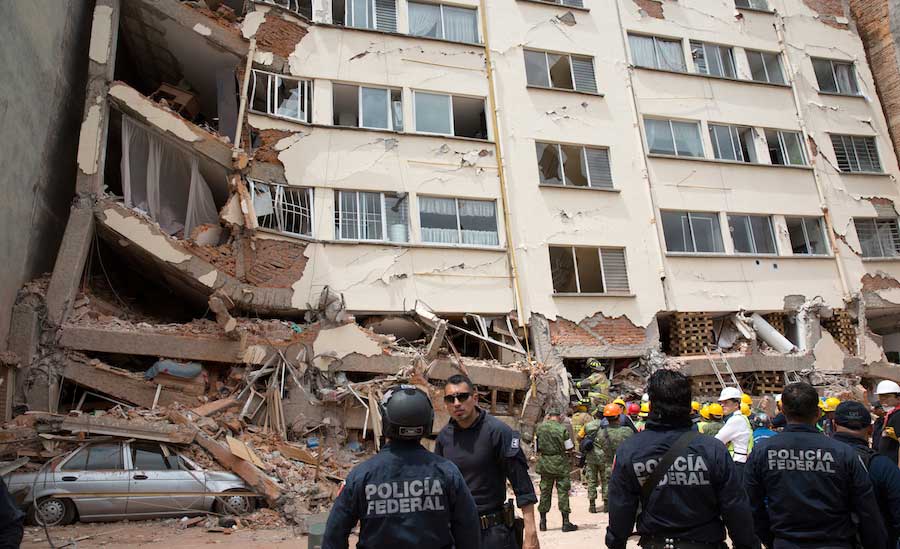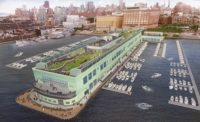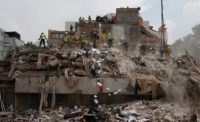U.S. engineering researchers are preparing to send teams to earthquake-stricken Mexico City once rescue-and-recovery efforts are complete, in hopes of learning more about the effect of building code revisions intended to strengthen seismic protections, that were adopted after an even more powerful earthquake in 1985. A preliminary assessment suggests the strengthened seismic codes improved building performance.
Sergio Manuel Alcocer, a research professor at the National Autonomous University of Mexico and a member of the Earthquake Engineering Research Institute says, as of Sept. 26—one week after the 7.1 magnitude Raboso quake struck around lunchtime, killing more than 300 people, damaging 11,000 homes and toppling some 40 buildings—that local authorities have entered recovery mode in looking for victims. “Unfortunately there are still 40 to 50 people buried in a 10-story structure,” he told ENR by phone. “It will take some time to remove the floors piece by piece.”
Alcocer says that his team has seen about 150 buildings with significant structural damage.
Alcocer says that his team has seen about 150 buildings with significant structural damage. But most of them were built before the post-1985 codes, or may have been of questionable construction quality, he adds.
The American Society of Civil Engineers might send a team to Mexico City at some point after rescue and recovery efforts are complete, although no definitive plan exists yet, says John Hooper, chair of the ASCE 7 Standard Minimum Design Loads for Buildings and Other Structures’ Seismic Subcommittee. “The key thing to learn from these events is how new buildings performed. From what I saw, the majority [of damaged buildings] were older buildings that don’t meet current standards. We know those buildings were at risk.”
The other key will be to see how buildings built or retrofitted to post-1985 codes performed. “Did those solutions reduce the vulnerability? Hopefully we already know the major lessons learned from past earthquakes, but there is always something to be learned,” says Hooper.
A report released Sept. 23 by Miyamoto International noted that the Raboso quake epicenter was located 120 kilometers from Mexico City, while the 1985 quake was located 300 km away. While the preliminary peak ground acceleration at the epicenter of the Riboso quake was about 0.4-0.5 g, Mexico City received levels of about 0.2 g, which should result in shaking that is “strong but not severe,” states the report.
Yet buildings that had not sustained significant damage in previous quakes did so this time, partly due to the different effects of movement on soils within, versus outside, the ancient lakebed underlying Mexico City, says Alcocer. “Those buildings at the edges of the lakebed got more damage. Within the lakebed, building designs are typically stronger and stiffer” to compensate for the weaker soils.
Building Codes Since the 1985 Quake
The post-1985 codes include ductile detailing in buildings, e.g., “stirrups closely spaced within concrete elements to form a cage so that the concrete doesn’t crumble,” says Alcocer. He adds that it appears that buildings with parking spaces beneath—which call for thick columns and walls—performed better than buildings without similar subterranean parking areas.
Gilberto Mosqueda, a professor of structural engineering at UC San Diego, says he will be on an EERI team going to Mexico City in a couple of weeks. The initial reconnaissance team will assess buildings that were newly constructed, yet collapsed, such as the Enrique Rebsamen school, where 19 children and 7 adults died. “We want to decide if it was a design or construction issue,” he says. Substandard construction quality or recent building add-ons that didn’t meet code might be factors.
Unlike in 1985, where “you took pictures and a notepad and tried to sync them up later,” here, the team will be able to take photos and match them up with GPS coordinates and notes to quickly get an idea of the bigger picture, Mosqueda says. “We may be able to identify buildings of interest for further study. Then specialized teams will follow up.”
Despite the ongoing recovery and long-term questions, the city bounced back fairly well in 24 hours, says Alcocre. People are back at work, and water and electricity are working. However, he cautions that quakes in Mexico will always cause different types and targets of damage according to the direction of the movements. “This is a wakeup call. At anytime we could get a huge quake from the coast. The type of buildings that will be ‘excited’ could be different.”
How the city will address reconstruction efforts is also a question to be answered. “We are inspecting as many damaged buildings as we can. Today we’re finally back in the office trying to catch up with last week’s work, and getting ready for phase 2 of reconstruction,” says Marco Vidali, managing partner with Rizoma. “We have a couple of initiatives mainly focused on housing and schools, putting together a team for designing quick-to-build houses, and raising money to start demolition of affected schools, and building redesigned ones.”





Post a comment to this article
Report Abusive Comment